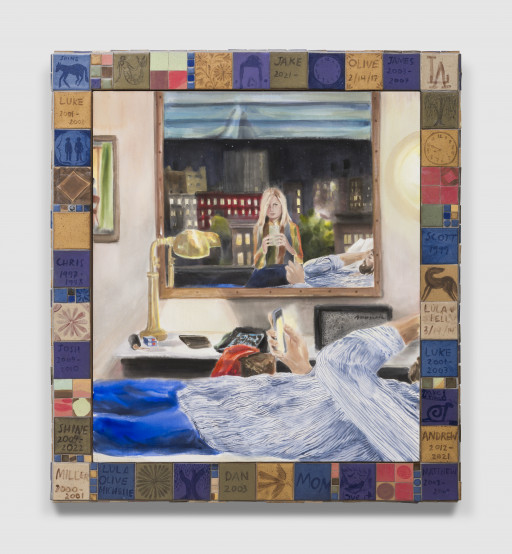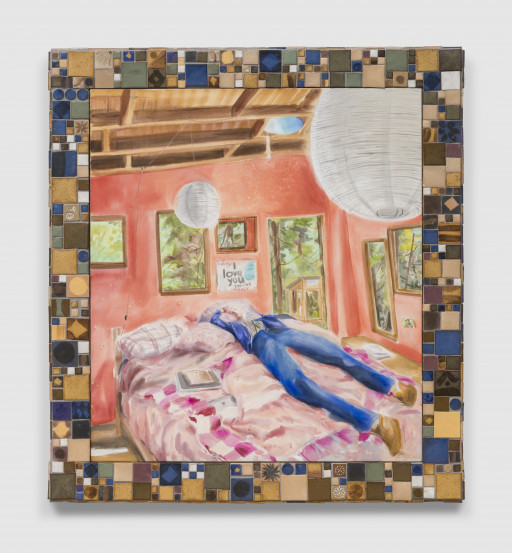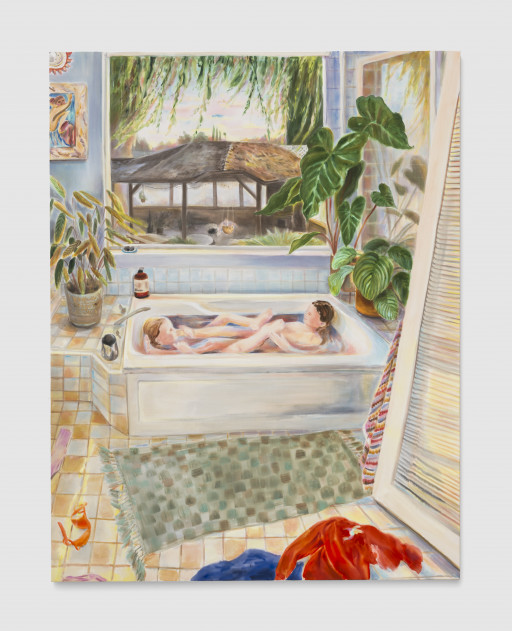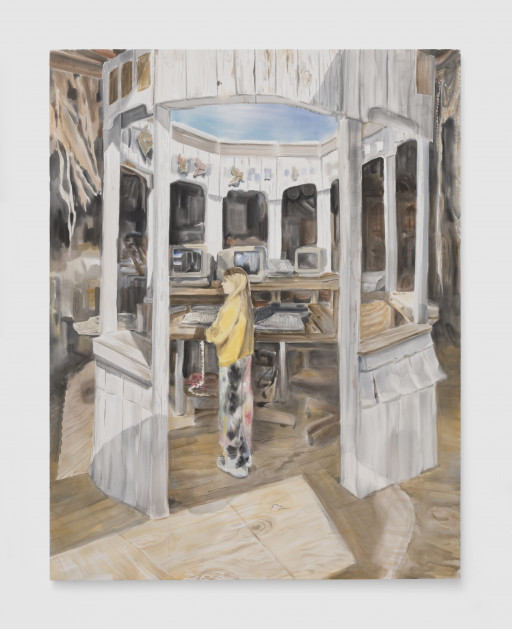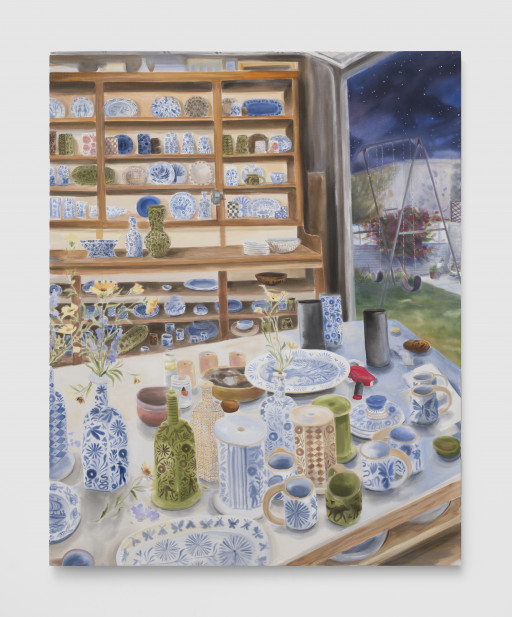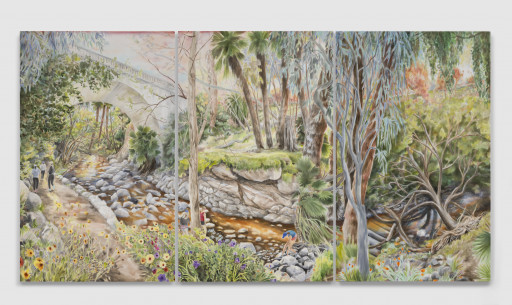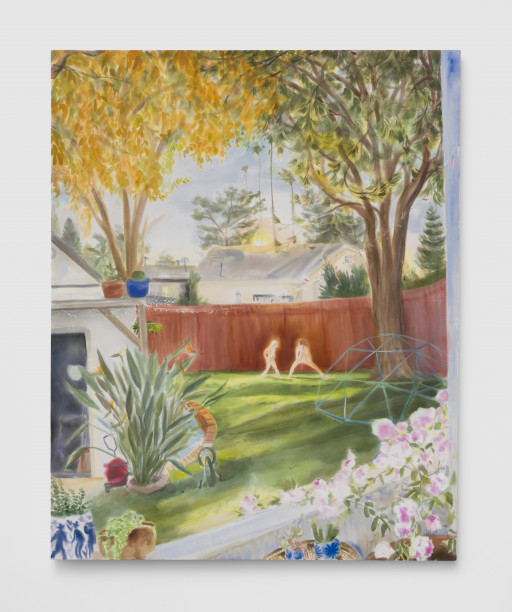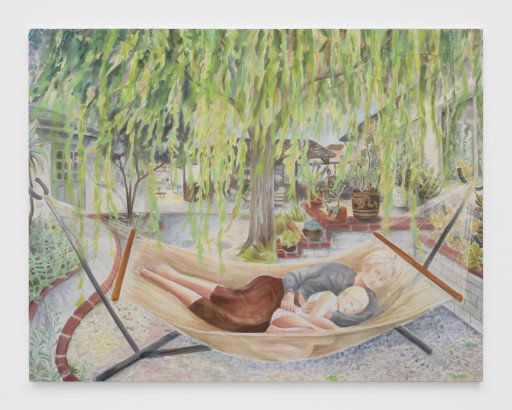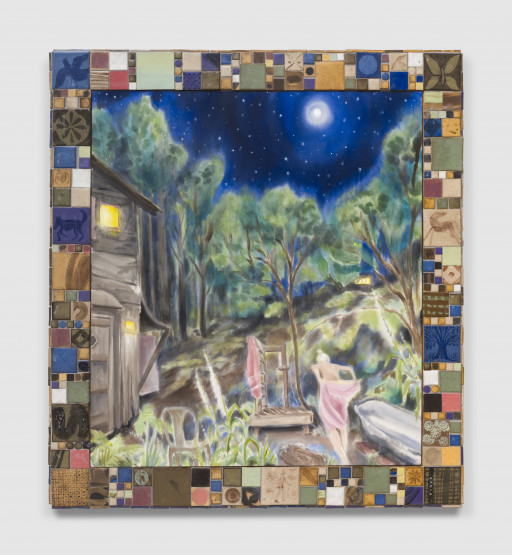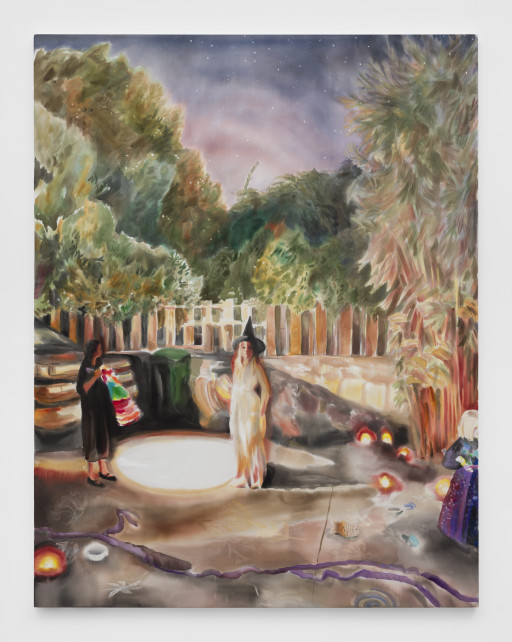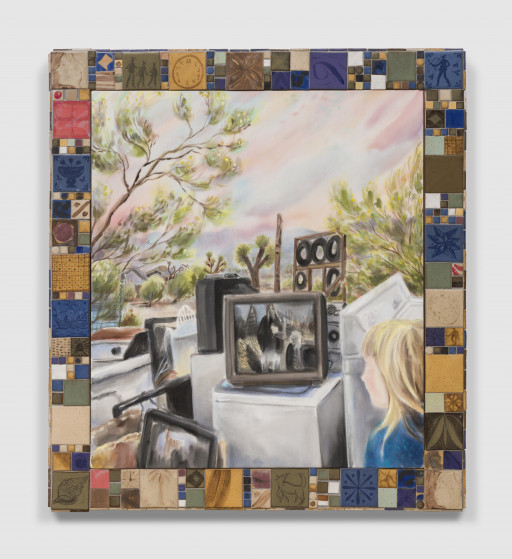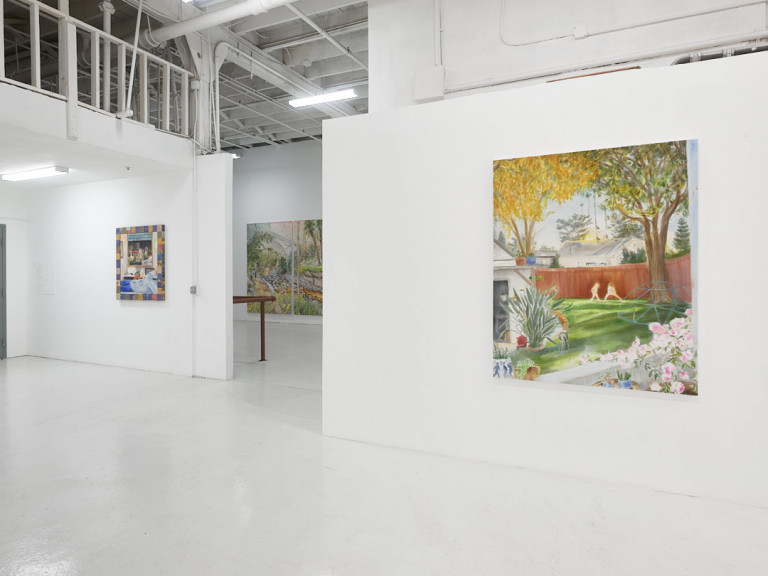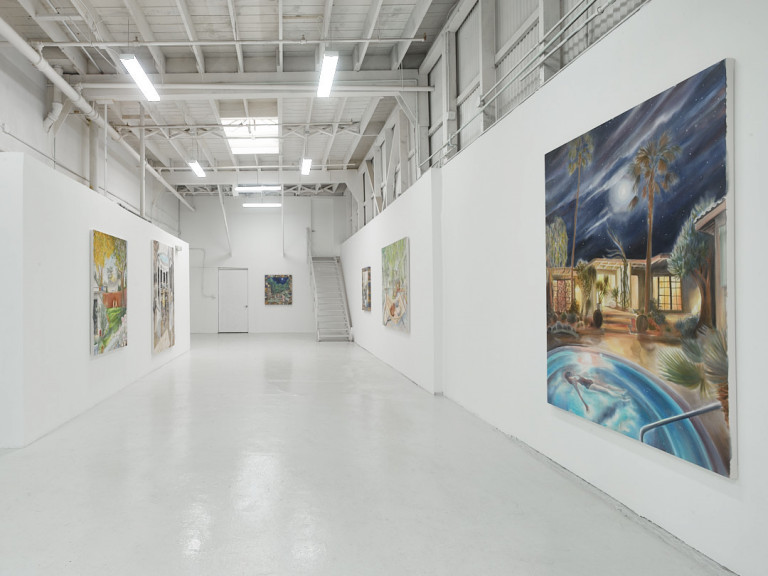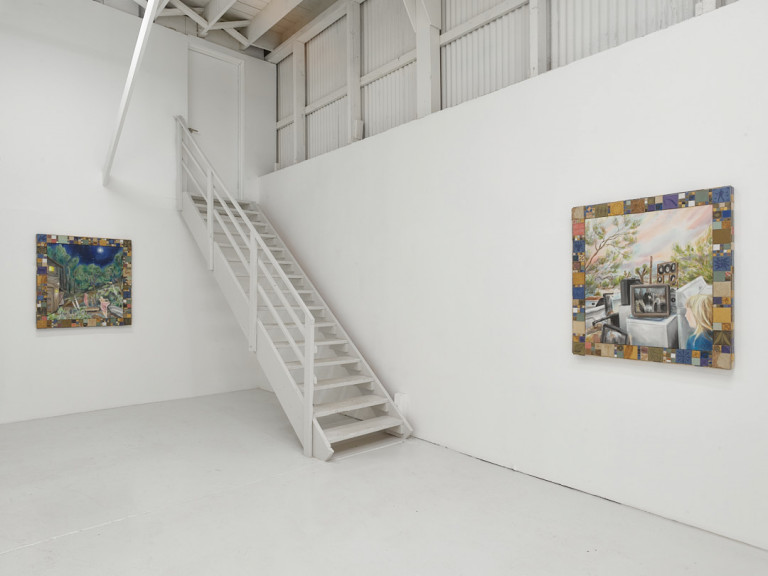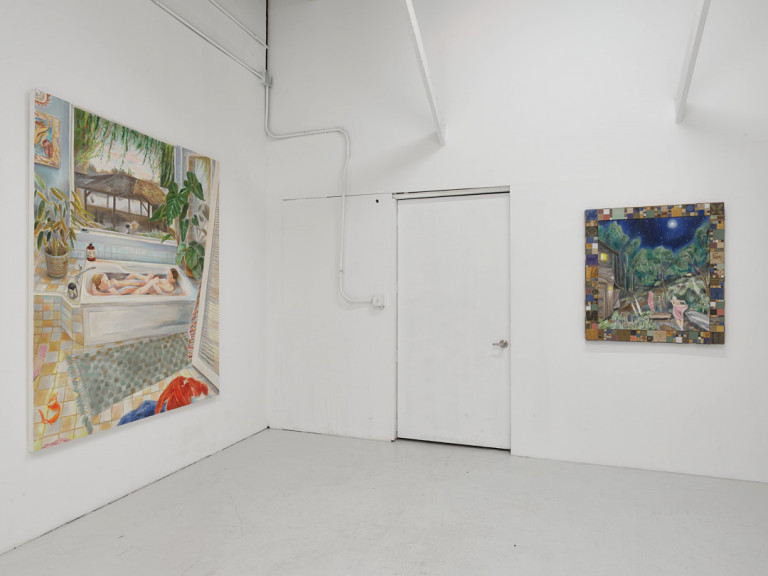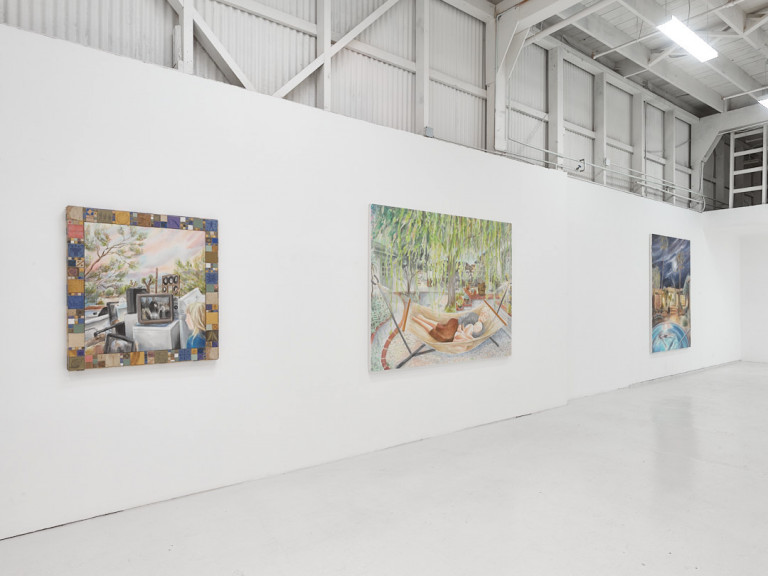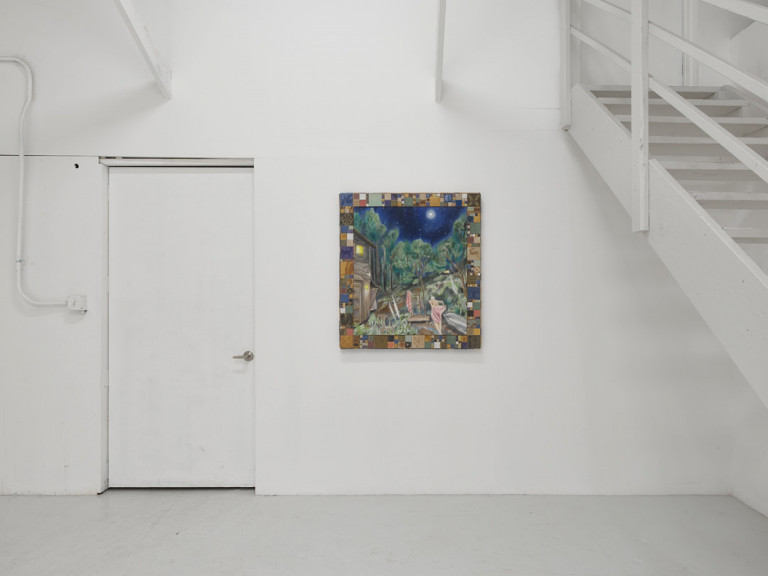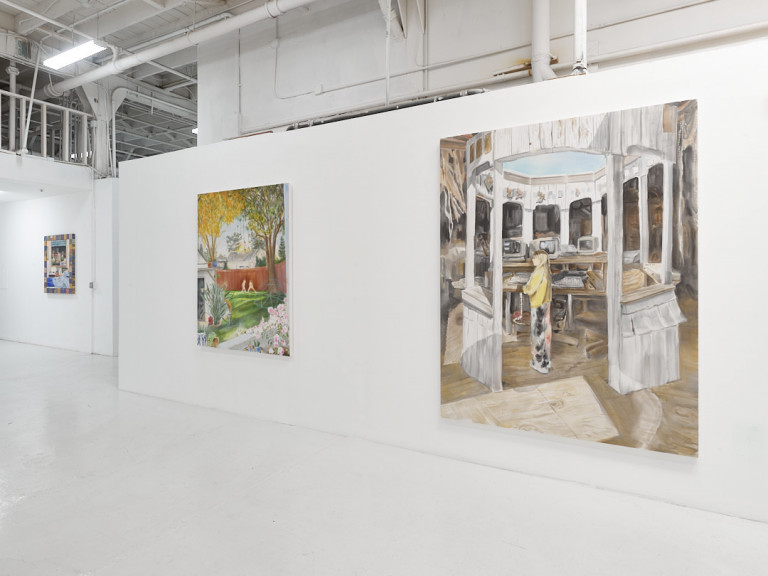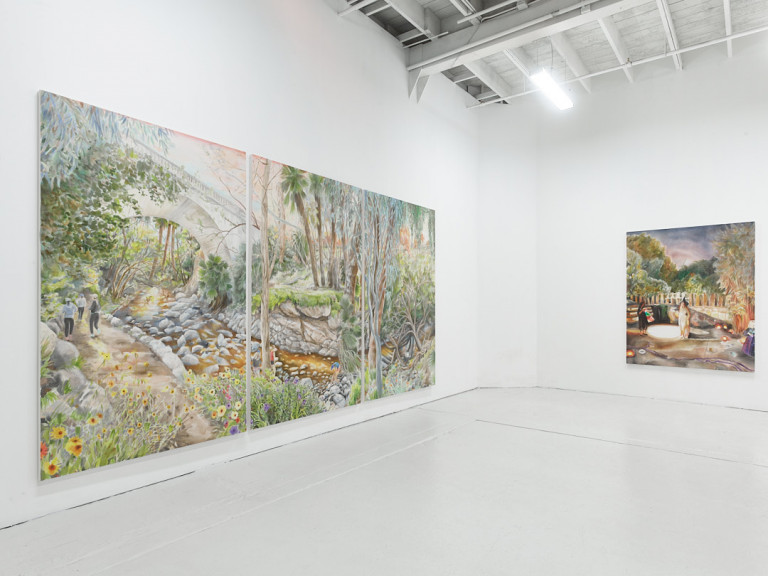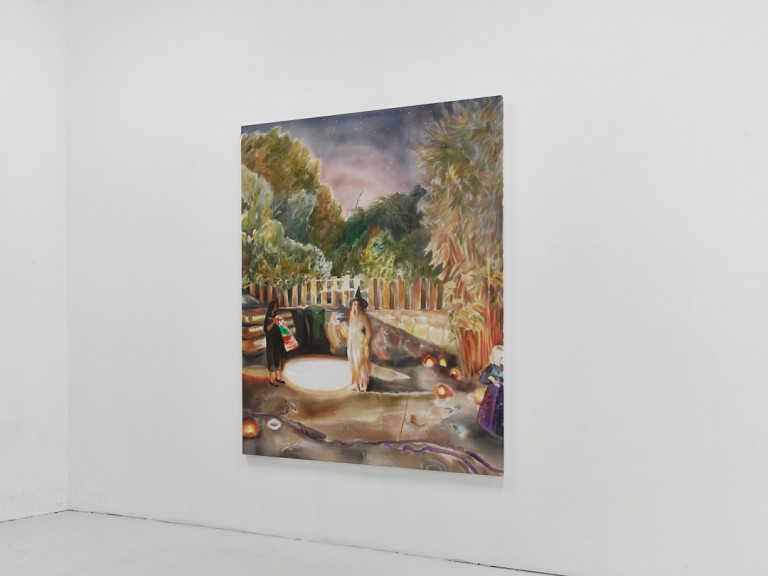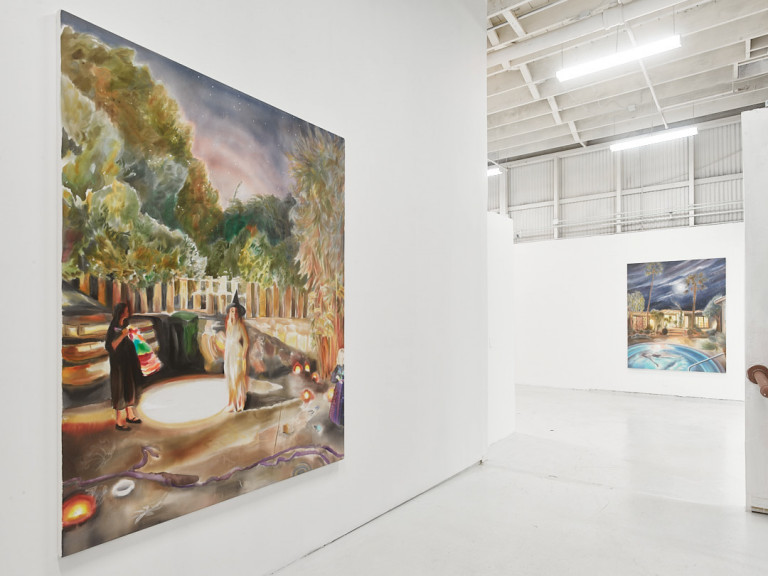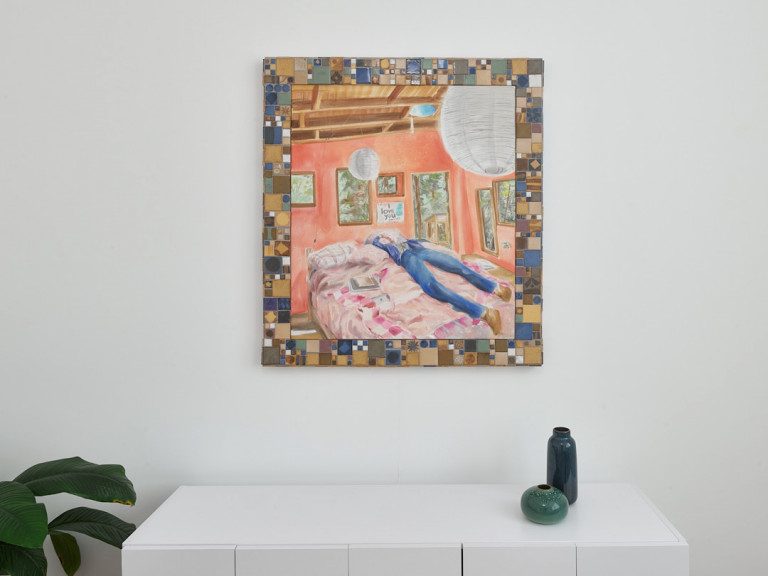Michelle Blade
Between the Bones and Now
Micki Meng Bayview
San Francisco
Opening September 23, 2023
The scenes in Michelle Blade’s recent paintings are preternaturally luminous; days are flaxen pink, nights are brooding indigo. A third-generation Angeleno, Blade wields California light in ways that make quotidian events idyllic, sometimes ecstatic. The twelve paintings (all completed in 2023) on view in her first exhibition at Micki Meng picture moments drawn from the artist’s day-to-day with her two daughters in her native city, often inhabiting spaces that resonate with family history. Together, these tableaux offer a dialectic picture of a single artist mother as she parses her roles, observing herself and her children, integrating art and life.
Though the focus of these paintings is the figure, Blade overwhelms her subjects with their surrounds. Often, her figures are simply rendered and take up little space on the canvas. It is through her treatment of the environment—painted in a vivid, expressionistic manner that veers toward pictorial animism—that Blade describes rich interiorities. We experience the reverie, confusion, or surrender of her subjects in the disarray of bedsheets, the slanted trajectory of clouds, or the way a branch yields or reaches. In Sibling Moment, Blade’s daughters can be seen in the distance, through a window, naked and peeing on the grass in their father’s backyard. Their easy wildness is mirrored in the sprawling overgrowth of the plants that encompass them, the sun and shadow that stretch across the lawn.
In several paintings here, Blade riffs on the art-historical genres of the bather and Madonna and child, reconceiving them to incorporate the female gaze—that of mother, lover, friend, and self. In Last Bath, Blade’s daughters are pictured the last time they took a bath together; the girls look at each other, unguarded and lost in their own world. Hope Springs pictures a woman alone in a pool, vulnerable to the looming night sky. In Under our Japanese Elm, the artist holds her daughter as they swing on a terrace under a weeping willow. Throughout these works, Blade centers on moments of autonomy and closeness.
As she developed these paintings, Blade considered the word “sentimentality” and the ways in which it is both feminized and used pejoratively. She leaned into the lyrical, romantic aspect of her scenes, endeavoring to expand the scope of the term. Indeed, there is a sweetness to Blade’s paintings, but what makes them so are the darkness, complexity, and precariousness that seem to hover just outside their bounds. Contributing to this sense is the looseness that characterizes Blade’s compositions; upon close inspection, the gestalt of these images can fall apart into abstraction. Blade paints with acrylic and ink on poplin, which she first saturates in order to work wet-on-wet. In this way, she improvises with her medium as it bleeds and moves according to its own logic. It’s a practice of exploration and acceptance.
Four paintings are bordered by delft-blue and earthen mosaic frames. Made from small ceramic tiles, the frames feature glyphs and texts that inform the enclosed paintings, introducing divergent perspectives and temporalities that refer to past lives. Three of these works are self-portraits, picturing the artist in scenarios that exclude her family—she sits beside her boyfriend, walks alone to an outdoor shower at night, and collapses on a bed at midday. These frames, and all of their facets and fragments, suggest the artist’s reflection on the palimpsest that is identity—we are constantly in flux, yet always contoured by what came before.
